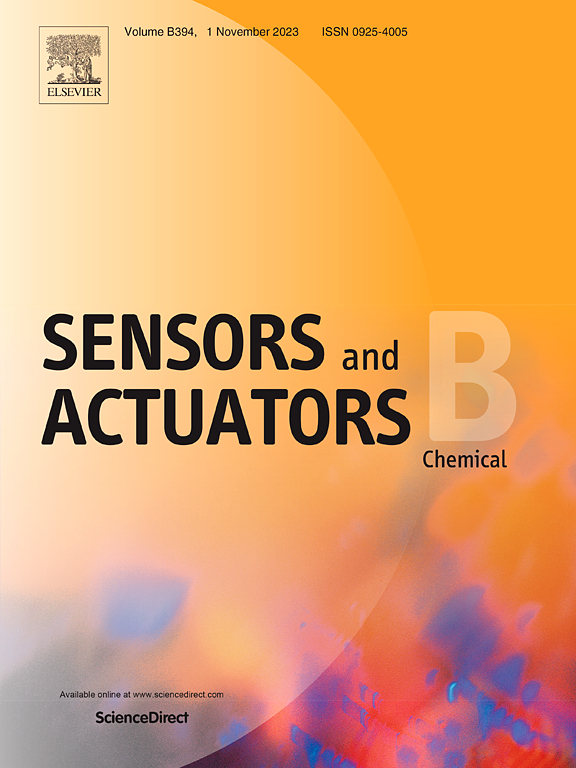Advanced yolk-shell Pt@In2O3 nanoreactor: Achieving selective and ppb-level acetone detection
IF 8
1区 化学
Q1 CHEMISTRY, ANALYTICAL
引用次数: 0
Abstract
Acetone is commonly used in industry and laboratories but can harm human organs at high concentrations. It also serves as a biomarker for fat metabolism. The accurate detection of acetone using chemiresistive gas sensors holds great promise for applications in human exhaled breath analysis. It remains a hurdle to overcoming challenges with metal oxide-based sensors in detecting acetone selectively at parts per billion (ppb) levels, especially in high-humidity environments. We synthesised a Pt@In2O3 yolk-shell nanoreactor that ensures gas sensing performance while protecting noble metal nanoparticles from oxidation. It has a 20-ppb detection limit, a good response of 5.13 at 1.8 ppm under a high relative humidity of 90 %, and outstanding selectivity for acetone. Chemical state analyses and first-principles calculations reveal that the nanoreactor has abundant oxygen vacancy and strong acetone adsorption, facilitating enhanced charge transfer during sensing. Exhaled breath tests confirm that our sensors can differentiate individuals with abnormal respiratory acetone levels. Our study opens a new path for developing high-performance gas-sensitive materials and structures for a wide range of applications.

求助全文
约1分钟内获得全文
求助全文
来源期刊

Sensors and Actuators B: Chemical
工程技术-电化学
CiteScore
14.60
自引率
11.90%
发文量
1776
审稿时长
3.2 months
期刊介绍:
Sensors & Actuators, B: Chemical is an international journal focused on the research and development of chemical transducers. It covers chemical sensors and biosensors, chemical actuators, and analytical microsystems. The journal is interdisciplinary, aiming to publish original works showcasing substantial advancements beyond the current state of the art in these fields, with practical applicability to solving meaningful analytical problems. Review articles are accepted by invitation from an Editor of the journal.
 求助内容:
求助内容: 应助结果提醒方式:
应助结果提醒方式:


